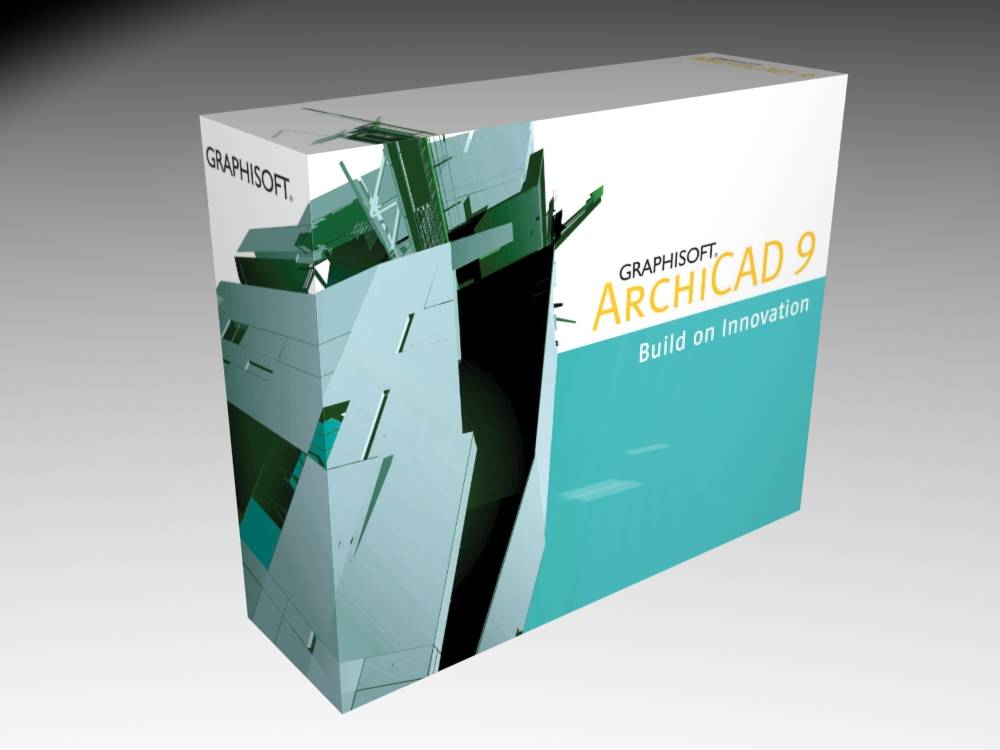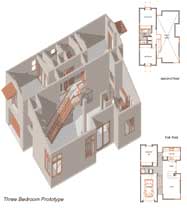|
|
 |
ARTICLES
|
 |
|
| Of
Virtual Buildings and Real Architecture, by
David Marlatt, AIA |
| Architects,
in partnership with owners, are in a prime position to assert
their central role not only in the initial design of their buildings,
but also in their long term programming, maintenance and opertaion.
|
| Enough
has been written in the past 24 months about virtual reality,
virtual buildings, and virtual firms, that the subject is beginning
to appear quite real. The technological hype with which we are
virtually surrounded, however, can easily cloud the architect's
vision of deeper issues and problems facing the profession, such
as the environmental impact of building, housing for a growing
and moving population, firm profitability, and relevance of our
profession in society over the long term. |
| These are
daunting challenges for which - despite hype and cliches - computers
and software are an incontournable part of any reasonable solution.
Most architects accept and embrace this fact, but it is still
healthy to evaluate technology against some of the core values
of architecture as both a profession and a business. |
| Mass
Customization |
| n his recent
book, Democratic Architecture, Donald MacDonald, FAIA, proposes
four principles to be applied to housing: that it be affordable,
easily and inexpensively changeable, minimize damage to the environment,
and express the multiplicity of society. These principles transcend
computer technology, of course, but there are places where the
right software can be extremely helpful. Daiwa House in Tokyo,
Japan, for example, will soon create custom software and building
components for their 5,000 person sales force. This software will
enable them to work directly with clients to design "custom" houses
within a wide range of parameters. By using intelligent building
objects in their sales and design process, they will allow people
to participate in the design of their homes, an option never before
available to them. |
| In Americus,
GA, Habitat for Humanity International rapidly prototypes and
optimizes inexpensive houses for its chapters to use in their
local communities (Graphisoft has donated more than 200 copies
of ArchiCAD to Habitat for Humanity chapters across America).
"The difficulty with the type of houses we build is that they
tend to be pretty small," says Peter Dalva, Habitat for Humanity's
associate director of construction technology. "You tend to do
a lot of revisions and alterations, and if I didn't have ArchiCAD
I couldn't make as many revisions. It leads to better design."
|
| Effective
communication with constituency groups is also a great challenge
in the housing community. Arizona architect Paul Schwam helps
design affordable housing in communities along the Mexico/U.S.
border: "...the problem is you need to get a lot of information
across to a lot of people who don't all necessarily speak the
same language. The best way to do that is graphically, and it's
also better for the planners to think about it in 3D. I think
time is one of the biggest issues. If we're going to solve the
border development problem, we're going to have to solve it quickly."
|
 |
| Market Square
North, STUDIOS ArchitectureMore, More, Faster, Faster |
| And, we
might add to the subtitle above, "Cheaper, Cheaper." As are all
professionals, architects are under increasing pressure to deliver
more and better client services on a shorter schedule while incurring
fewer costs. Redundant processes only waste time and increase
the risk of errors. Nevertheless, creativity and imagination -
intrinsic to successful architecture - defy systemization and
efficiency. |
| The profession's
challenge is to provide an efficient environment for invention
and discovery. Like a fast-track project, design must continue
throughout the documentation process, and working drawings should
start with schematic design, each affecting the other in a dynamic
and recursive manner. |
| This is
possible using integrated CAD software which stores the complete
building model in the computer. Access to detailed information
early in the design phase helps improve design and avoid errors
later. Conversely, when working drawings become by-products of
the integrated building model, fundamental design changes can
occur with fewer repercussions very late in the process. In addition
to the benefit of improved design quality, integrated CAD software
reduces needless administration and the re-drawing of redundant
details, specifications and other information. |
| Virtual
You, Virtual Me, We get Together Virtually |
| Today I
drove 20 miles to and from work across San Francisco and burned
about one gallon of fossil fuel. I also consumed roadways, abraded
my car, and wasted about one hour of my life. So did hundreds
of thousands of people in the Bay Area. |
| This evening
on the World Wide Web I visited my stockbroker, my travel agent,
shopped for a gift, and did some research, and burned practically
no fuel. So did hundreds of thousands of people in the Bay Area.
|
| Despite
a large and fast-growing population, however, the World Wide Web
remains generally a solitary and uninspiring "place." Is it inevitable
that the Web not transcend the flat computer screen , or is it
only that principles of firmness, commodity and delight have never
been seriously applied to it? Just like a poorly designed building
or city, the lack of architectural thought in most Websites impacts
my ability to navigate, interact with others, and accomplish my
tasks efficiently or at all. |
| Improving
the architectural character of the Web is an important issue for
the opportunities it presents architects and the benefits it may
engender for users. The Web will never replace most conventional
building, but its potential to archive information, process transactions,
and facilitate meetings can also help save a significant amount
of the world's natural resources. |
 |
| Creators
and Caretakers of the Built Environment |
| Because
architects using integrated 3D CAD software generate so much valuable
building information in the course of delivering architectural
services, many new fields and services open themselves. Some ideas
for ways in which architects can stay involved with clients and
projects beyond the issuance of an occupancy permit are: |
- Creation
of images, animations and virtual reality scenes for
- Building
marketing,
- Management
of building spaces and assets,
- Post-occupancy
studies and simulation of design changes,
- Analysis
and visualization of product performance over the building
life cycle,
- Content
development for electronic "building owner's manuals" including
product data and links to manufacturer Websites
|
| Building
owners and managers are also seeking ways to use technology to
manage their assets, optimize leasing, and improve their bottom
line. Architects, in partnership with owners, are in a prime position
to assert their central role not only in the initial design of
buildings, but also in their long-term programming, maintenance
and operation. |
| Between
now and the new millennium - still a long time in the computer
world - it is safe to say that almost all practicing architects
will use computers and software for design and drafting. Beyond
these foundational tasks, however, how will computers be used
to advance the profession, better the environment, and provide
people with greater access to architecture? |
| This is
not a question for some future virtual world. Intelligent object
technology is available now. Designing in an integrated environment
is now. Controlling complete, three-dimensional building data
is now. All of these technologies can be put to work today to
address real problems and exploit great opportunities. |
|
|
|